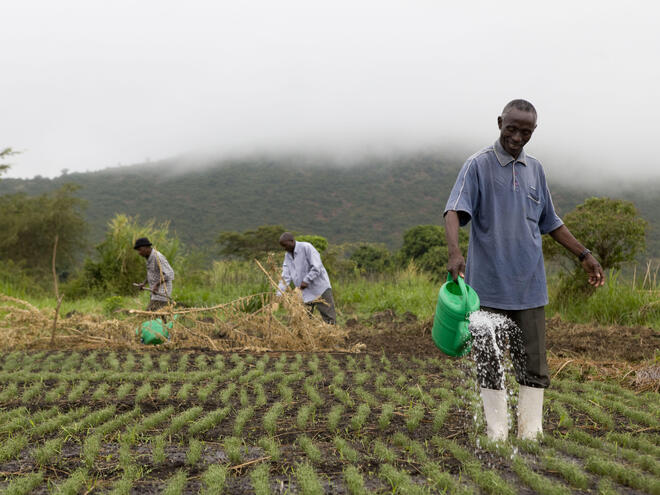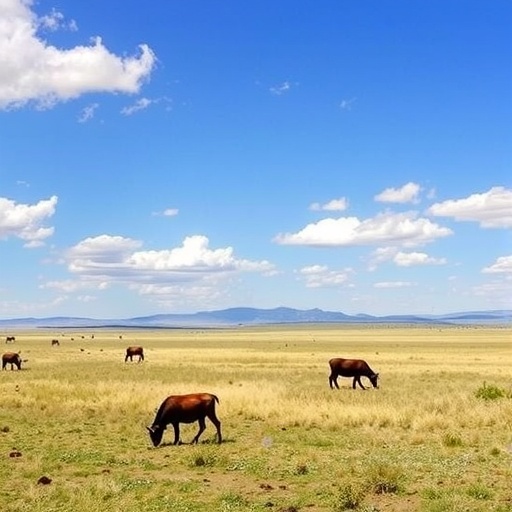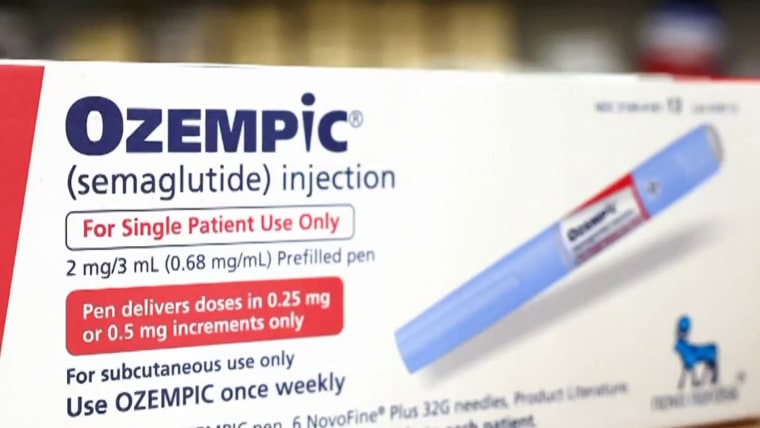The Role of Modern Agricultural Technologies in Improving Agricultural Productivity and Land Use Efficiency – Frontiers

Report on Modern Agricultural Technologies for Sustainable Development
Introduction: Aligning Agricultural Innovation with Global Goals
Modern agricultural technologies are pivotal in addressing the interconnected global challenges of food security, environmental sustainability, and climate change, which are central to the United Nations’ Sustainable Development Goals (SDGs). This report reviews the transformative potential of key innovations—including precision agriculture, biotechnology, and artificial intelligence—to enhance productivity and resource efficiency. The successful implementation of these technologies is critical for achieving sustainable intensification, thereby advancing several SDGs, most notably SDG 2 (Zero Hunger), SDG 12 (Responsible Consumption and Production), and SDG 13 (Climate Action).
Key Technological Innovations and Their Impact on SDGs
A range of advanced technologies offers substantial benefits for sustainable agriculture. Their contributions to specific SDGs are detailed below.
Precision Agriculture
Precision agriculture leverages GPS, drones, and Internet of Things (IoT) sensors to optimize farming practices. This approach directly supports multiple SDGs:
- SDG 2 (Zero Hunger): Enhances food production by improving crop yields by an estimated 20–30%.
- SDG 12 (Responsible Consumption and Production): Reduces input waste, such as fertilizers and pesticides, by 40–60%, minimizing environmental contamination.
- SDG 15 (Life on Land): Mitigates the impact of agriculture on terrestrial ecosystems through more targeted resource application.
Biotechnology
Genetic innovations, including CRISPR and Genetically Modified Organisms (GMOs), create crops with enhanced resilience.
- SDG 2 (Zero Hunger): Stabilizes food supplies by developing drought- and pest-resistant crops. For example, Bt cotton has reduced pesticide use by 50% in India.
- SDG 13 (Climate Action): Contributes to climate adaptation by engineering crops that can withstand environmental stressors.
Smart Irrigation
Advanced irrigation systems optimize water use, a critical factor for sustainable agriculture.
- SDG 6 (Clean Water and Sanitation): Promotes sustainable water management by increasing water use efficiency by 40–60%.
- SDG 2 (Zero Hunger): Secures crop production in water-scarce regions, enhancing food security.
Automation and Robotics
Automation addresses operational challenges in agriculture, contributing to economic and productive goals.
- SDG 8 (Decent Work and Economic Growth): Mitigates labor shortages and improves the economic viability of farming operations by reducing costs by approximately 25%.
- SDG 9 (Industry, Innovation, and Infrastructure): Represents a significant advancement in agricultural infrastructure, driving efficiency and productivity.
Vertical Farming
This innovative method of indoor farming is particularly relevant for urban sustainability.
- SDG 11 (Sustainable Cities and Communities): Bolsters urban food security and reduces food miles by enabling local production.
- SDG 15 (Life on Land): Alleviates pressure on farmland by increasing yields 10–20 times while using 95% less land and water.
Artificial Intelligence (AI)
AI-driven analytics enhance strategic decision-making in agriculture.
- SDG 12 (Responsible Consumption and Production): Optimizes resource allocation with over 90% accuracy in forecasting, minimizing waste.
- SDG 9 (Industry, Innovation, and Infrastructure): Drives the modernization of the agricultural sector through data-centric management.
Barriers to Adoption and Implications for SDG 10
Despite their potential, the widespread adoption of these technologies is hindered by several factors. These barriers risk widening the gap between large-scale and smallholder farmers, directly impacting SDG 10 (Reduced Inequalities).
- High Costs: The initial investment for advanced technologies can be prohibitive for smallholders.
- Technological Illiteracy: A lack of training and education prevents effective implementation.
- Regulatory Issues: Inconsistent or absent regulatory frameworks can slow down innovation and adoption.
Strategic Recommendations for Equitable and Sustainable Progress
To overcome these challenges and harness the full potential of agrotech for the SDGs, a coordinated, multi-stakeholder approach is necessary.
- Supportive Policies: Governments must develop policies that facilitate access to technology and provide financial incentives for adoption.
- Public-Private Partnerships: Collaboration between public and private sectors is essential for funding research, development, and deployment, aligning with SDG 17 (Partnerships for the Goals).
- Capacity Building: Investing in training and education programs is crucial to equip farmers with the skills needed to utilize modern technologies effectively.
- Integration with Sustainable Systems: Agricultural technologies should be integrated with renewable energy sources and circular economy principles to maximize their contribution to SDG 7 (Affordable and Clean Energy) and SDG 12.
Conclusion
Modern agricultural technologies offer a clear pathway toward achieving sustainable intensification, which is fundamental to global food security and climate resilience. However, realizing this potential requires concerted efforts to address significant barriers to adoption, particularly for smallholder farmers. By fostering an inclusive and supportive ecosystem through strategic policies, partnerships, and education, the global community can leverage these innovations to make substantial progress on the Sustainable Development Goals.
Analysis of Sustainable Development Goals in the Article
1. Which SDGs are addressed or connected to the issues highlighted in the article?
The article on modern agricultural technologies connects to several Sustainable Development Goals (SDGs) by addressing global challenges related to food, water, innovation, and environmental sustainability. The primary SDGs identified are:
- SDG 2: Zero Hunger: The core theme of the article is enhancing food security and agricultural productivity to feed a growing global population.
- SDG 6: Clean Water and Sanitation: The article explicitly discusses technologies like smart irrigation designed to improve water-use efficiency.
- SDG 9: Industry, Innovation, and Infrastructure: The entire review focuses on technological innovations (precision agriculture, AI, biotechnology) and their role in creating a more resilient and sustainable agricultural sector.
- SDG 12: Responsible Consumption and Production: The article highlights how modern technologies can lead to more efficient use of resources, such as land, water, and agricultural inputs like pesticides, promoting sustainable production patterns.
- SDG 13: Climate Action: The text addresses climate change as a major challenge and discusses innovations like drought-resistant crops that enhance resilience to climate-related impacts.
- SDG 17: Partnerships for the Goals: The article concludes by emphasizing the need for collaboration, specifically mentioning “public-private partnerships” to overcome barriers to technology adoption.
2. What specific targets under those SDGs can be identified based on the article’s content?
Based on the article’s discussion of modern agricultural technologies and their impacts, the following specific SDG targets can be identified:
- Target 2.3: By 2030, double the agricultural productivity and incomes of small-scale food producers. The article addresses this by discussing technologies that “significantly enhance productivity” and noting the adoption challenges faced by “smallholders.”
- Target 2.4: By 2030, ensure sustainable food production systems and implement resilient agricultural practices that increase productivity and production. This is a central theme, with the article highlighting “sustainable intensification, increasing productivity without expanding farmland” and the development of “drought and pest-resistant crops.”
- Target 6.4: By 2030, substantially increase water-use efficiency across all sectors. The article directly supports this target by stating that “Smart irrigation boosts water efficiency by 40–60%” and vertical farming uses “95% less… water.”
- Target 9.4: By 2030, upgrade infrastructure and retrofit industries to make them sustainable, with increased resource-use efficiency and greater adoption of clean and environmentally sound technologies and industrial processes. The promotion of “precision agriculture, biotechnology, smart irrigation, automation, vertical farming, and artificial intelligence (AI)” aligns perfectly with this target.
- Target 12.2: By 2030, achieve the sustainable management and efficient use of natural resources. The article provides concrete examples, such as precision agriculture that “cuts input waste by 40–60%,” Bt cotton “reducing pesticide use by 50%,” and vertical farming using “95% less land.”
- Target 13.1: Strengthen resilience and adaptive capacity to climate-related hazards and natural disasters in all countries. The development of “drought and pest-resistant crops” through biotechnology is a direct measure to build resilience against climate change impacts.
- Target 17.17: Encourage and promote effective public, public-private and civil society partnerships. The article explicitly calls for “Policy support, public-private partnerships, and training” as vital for ensuring broader access to these technologies.
3. Are there any indicators mentioned or implied in the article that can be used to measure progress towards the identified targets?
Yes, the article provides several quantitative and qualitative indicators that can be used to measure progress towards the identified targets:
- Indicator for Agricultural Productivity (Targets 2.3 & 2.4): The article provides specific metrics, such as “improves yields by 20–30%” from precision agriculture and a “10–20 times” increase in yields from vertical farming. These percentages represent direct measures of productivity gains.
- Indicator for Water-Use Efficiency (Target 6.4): Progress can be measured by the percentage increase in water efficiency. The article states that smart irrigation leads to a “40–60%” boost in water efficiency and vertical farming results in a “95%” reduction in water use.
- Indicator for Resource Efficiency (Targets 9.4 & 12.2): The article implies several indicators for resource efficiency, including:
- Percentage reduction in input waste (“cuts input waste by 40–60%”).
- Percentage reduction in pesticide use (“reducing pesticide use by 50% in India”).
- Percentage reduction in land use for the same output (“95% less land” for vertical farming).
- Percentage reduction in labor costs (“reduce costs by 25%” through automation).
- Indicator for Technological Adoption and Accuracy (Target 9.4): The adoption rate of technologies like AI can be an indicator. The article also mentions the performance of these technologies, such as “over 90% accuracy in forecasting and resource allocation” by AI analytics.
- Indicator for Climate Resilience (Target 13.1): The development and deployment of climate-resilient crop varieties serve as a key indicator. The article specifically mentions “drought and pest-resistant crops” as an outcome of biotechnology.
- Indicator for Partnerships (Target 17.17): The formation and effectiveness of “public-private partnerships” aimed at technology dissemination and training for smallholders can be a qualitative indicator of progress.
4. Summary Table of SDGs, Targets, and Indicators
| SDGs | Targets | Indicators |
|---|---|---|
| SDG 2: Zero Hunger | 2.3: Double agricultural productivity of small-scale producers. 2.4: Ensure sustainable and resilient food production systems. |
– Percentage increase in crop yields (e.g., 20-30% from precision agriculture). – Yield increase factor (e.g., 10-20 times from vertical farming). |
| SDG 6: Clean Water and Sanitation | 6.4: Substantially increase water-use efficiency. | – Percentage increase in water efficiency (e.g., 40-60% from smart irrigation). – Percentage reduction in water use (e.g., 95% from vertical farming). |
| SDG 9: Industry, Innovation, and Infrastructure | 9.4: Upgrade industries for sustainability and adoption of clean technologies. | – Adoption rate of modern agricultural technologies (e.g., AI, IoT, drones). – Accuracy of technological applications (e.g., >90% for AI forecasting). |
| SDG 12: Responsible Consumption and Production | 12.2: Achieve sustainable management and efficient use of natural resources. | – Percentage reduction in input waste (e.g., 40-60%). – Percentage reduction in pesticide use (e.g., 50%). – Percentage reduction in land use (e.g., 95%). |
| SDG 13: Climate Action | 13.1: Strengthen resilience and adaptive capacity to climate-related hazards. | – Development and use of drought and pest-resistant crop varieties. |
| SDG 17: Partnerships for the Goals | 17.17: Promote effective public-private and civil society partnerships. | – Establishment of public-private partnerships for technology access and training. |
Source: frontiersin.org

What is Your Reaction?
 Like
0
Like
0
 Dislike
0
Dislike
0
 Love
0
Love
0
 Funny
0
Funny
0
 Angry
0
Angry
0
 Sad
0
Sad
0
 Wow
0
Wow
0

















































:focal(1500,1000)/https://media.globalcitizen.org/a6/9a/a69a4720-d8a1-4715-b596-18738d03c05c/rotary_polio_hero_image.jpg?#)






/countries/sri-lanka/photo-credit---dmc-sri-lanka.tmb-1200v.jpg?sfvrsn=dc298bcc_1#)
















